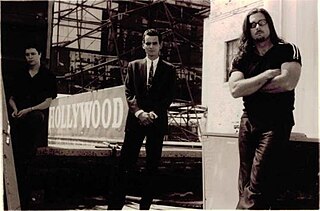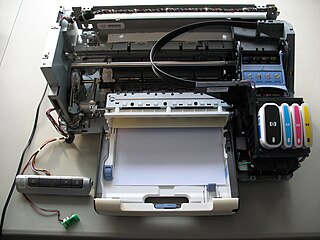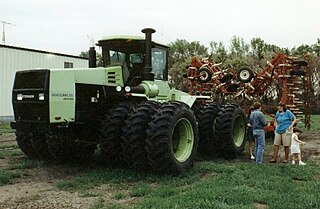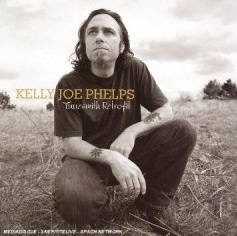In software engineering, structural design patterns are design patterns that ease the design by identifying a simple way to realize relationships among entities.

The Richmond–San Rafael Bridge is the northernmost of the east–west crossings of the San Francisco Bay in California, USA. Officially named after California State Senator John F. McCarthy, it bridges Interstate 580 from Richmond on the east to San Rafael on the west. It opened in 1956, replacing ferry service by the Richmond–San Rafael Ferry Company.

Seismic retrofitting is the modification of existing structures to make them more resistant to seismic activity, ground motion, or soil failure due to earthquakes. With better understanding of seismic demand on structures and with our recent experiences with large earthquakes near urban centers, the need of seismic retrofitting is well acknowledged. Prior to the introduction of modern seismic codes in the late 1960s for developed countries and late 1970s for many other parts of the world, many structures were designed without adequate detailing and reinforcement for seismic protection. In view of the imminent problem, various research work has been carried out. State-of-the-art technical guidelines for seismic assessment, retrofit and rehabilitation have been published around the world – such as the ASCE-SEI 41 and the New Zealand Society for Earthquake Engineering (NZSEE)'s guidelines. These codes must be regularly updated; the 1994 Northridge earthquake brought to light the brittleness of welded steel frames, for example.

The General Dynamics RIM-24 Tartar was a medium-range naval surface-to-air missile (SAM), and was among the earliest surface-to-air missiles to equip United States Navy ships. The Tartar was the third of the so-called "3 T's", the three primary SAMs the Navy fielded in the 1960s and 1970s, the others being the RIM-2 Terrier and RIM-8 Talos.

Faith and the Muse was an American gothic rock/dark wave band composed of two musicians, Monica Richards and William Faith. Their music encompasses many genres, from folk-style songs to darker compositions, drawing on many sources and influences, notably Dead Can Dance. Richards is the primary singer, although Faith sings one or two tracks on each album. Their influences include dark alternative, gothic rock, Celtic, and other folk influences. Welsh and Irish mythology have often served as inspiration to many of the band's songs.

Spahn Ranch was an electro-industrial group from Los Angeles. Active from 1992 to 2000, the band played a subgenre of industrial music with its fusion of electronic dance, industrial and gothic music.

A diesel particulate filter (DPF) is a device designed to remove diesel particulate matter or soot from the exhaust gas of a diesel engine.

Gandy Bridge is the southernmost bridge spanning Old Tampa Bay from St. Petersburg, Florida to Tampa, Florida. The original 1924 span was dismantled in 1975. The second bridge, constructed in 1956 was used for vehicular traffic until 1997, when it was converted to recreational use by non-motorized traffic. It became known as the Friendship Trail Bridge and was demolished in 2016, after closing in 2008 due to hazardous conditions and several failed efforts to preserve the span. The third (1975) and fourth (1997) spans of the Gandy Bridge are currently being used for vehicle traffic.

A continuous ink system (CIS), also known as a continuous ink supply system (CISS), a continuous flow system (CFS), an automatic ink refill system (AIRS), a bulk feed ink system (BFIS), or an off-axis ink delivery system (OIDS) is a method for delivering a large volume of liquid ink to a comparatively small inkjet printhead. Many business and professional grade printers incorporate a continuous ink system in their design to increase printing capacity.

Steiger is an American tractor manufacturer founded in the 1950s by Douglass and Maurice Steiger, brothers who were farmers near Red Lake Falls, Minnesota, and needed a reliable, high-powered, four-wheel drive tractor. The Steigers first built a tractor in their workshop for their own use, then built another and sold it to a neighbor in 1958. Demand grew, and the brothers soon began manufacturing the tractor in quantity at a location near Thief River Falls. From the beginning, the Steigers painted their tractors in almost neon chartreuse, contrasting with the more subdued yellow, green, blue, red and orange colors used by most other manufacturers.

Retrofitting refers to the addition of new technology or features to older systems.

Kelly Joe Phelps is an American musician and songwriter. His music has been characterized as a mixture of delta blues and jazz.
The Korg DSS-1 is a 12-bit polyphonic sampling synthesizer released in September 1986. It came out at a time when many of the popular synthesizer companies were beginning to get into sampling, an area of sound design that had previously been left to a handful of fledgling companies such as Fairlight, E-mu, and Ensoniq. Like Yamaha and Casio, however, Korg did not stay long in the sampling arena. The DSS-1 was the company's only sampler until 1998 when Korg introduced sampling options on their Triton and Trinity series of workstations, and on their Electribe series of drum-and-phrase samplers.

Tunesmith Retrofit is an album by American blues/folk singer and guitarist Kelly Joe Phelps, released in 2006. It was his first recording on the Rounder label after five releases with Rykodisc. It reached #5 on the Billboard Top Blues Albums charts.
Green retrofit, home energy retrofit, home retrofit, Deep energy retrofit and home performance retrofit are terms with overlapping meaning for retrofits that ensure the maintenance and preservation of buildings and the continued operation and maintenance of energy efficiency technologies. The meaning ranges from steps home owners can do themselves to buying up distressed properties and making them certifiably green. In the United States, the DOE issued a solicitation for $390 million for a "Retrofit Ramp-Up" program.
PACE financing is a means of financing energy efficiency upgrades, disaster resiliency improvements, water conservation measures, or renewable energy installations of residential, commercial, and industrial property owners. Depending on state legislation, PACE financing can be used to finance building envelope energy efficiency improvements such as insulation and air sealing, cool roofs, water efficiency products, seismic retrofits, and hurricane preparedness measures. In some states, commercial PACE financing can also fund a portion of new construction projects, as long as the building owner agrees to build the new structure to exceed the local energy code.
A Deep energy retrofit can be broadly categorized as an energy conservation measure in an existing building also leading to an overall improvement in the building performance. While there is no exact definition for a deep energy retrofit, it can be defined as a whole-building analysis and construction process that aims at achieving on-site energy use minimization in a building by 50% or more compared to the baseline energy use making use of existing technologies, materials and construction practices. Such a retrofit reaps multifold benefits beyond energy cost savings, unlike conventional energy retrofit. It may also involve remodeling the building to achieve a harmony in energy, indoor air quality, durability, and thermal comfort. An integrated project delivery method is recommended for a deep energy retrofit project. An over-time approach in a deep energy retrofitting project provides a solution to the large upfront costs problem in all-at-once execution of the project.

Gevo, Inc. is a renewable chemicals and advanced biofuels company headquartered in unincorporated Douglas County, Colorado in the Denver-Aurora metropolitan area. The company develops bio-based alternatives to petroleum-based products using a combination of biotechnology and classical chemistry. Gevo converts renewable raw materials into isobutanol and renewable hydrocarbons that Gevo believes can be directly integrated on a “drop in” basis into existing fuel and chemical products. Gevo's investors include Burrill & Company, Khosla Ventures, Lanxess, Osage University Partners, Total, and Virgin Green Fund, among others.
Universal Lighting Technologies, Inc. (Universal) is a commercial lighting manufacturer that was founded in 1947. The company is based in Nashville, Tennessee and became a part of the $105 Billion Panasonic family of companies in 2007. Universal primarily designs and manufactures high-efficiency LED solutions but continues to provide Ballasts to those who haven't yet made the switch to LED.They also provide lighting sensors, control systems as well as digital and analog dimming systems. The company acquired Vossloh-Schwabe's North American operations in 2009. This allowed them to also offer a full range of HID products, ignitors, transformers, lampholders, capacitors, and other components. Together, Universal, Douglas Lighting Controls, and Vossloh Schwabe are owned by Panasonic Lighting Americas, Inc. Universal Lighting Technologies has over 150 patents and offers thousands of LED upgrade solutions. Universal Lighting Technologies has kept all of their operating facilities in North America and uses 15 distribution warehouses to distribute products.












